Undertakers, hygienic bees and the scent of death

Everything seems to speed up once the autumn equinox passes; the frequency of low pressure systems rolling through, the wind speed, the flush of colour to the trees and the disappearance of summer migrants.
The 'local' swallows had gone by the 18th of September, but there are still small parties of migrating birds, and the odd singleton, trying to outrun (outfly?) the chilly Northerlies. They spend an hour or two swooping low through the cattle pasture, inexorably moving south to warmer climes.
In their place come overwintering golden plover, wheeling overhead in tightly choreographed jinking flocks, searching for the safest space to roost in the winter wheat or stubble fields. Their call, a plaintive, liquid 'too-ee', is paradoxically barely audible and far-carrying. It's a sound I usually associate with high summer and remote moorland.
Bumble bee queens will soon - or have already - holed up for the winter, the remaining lavender and verbena are no longer busy with them. If the sun appears there might be a late-flying red admiral searching for a sheltered spot to hibernate, but it's been a disastrous year for butterflies and there are even fewer than normal.
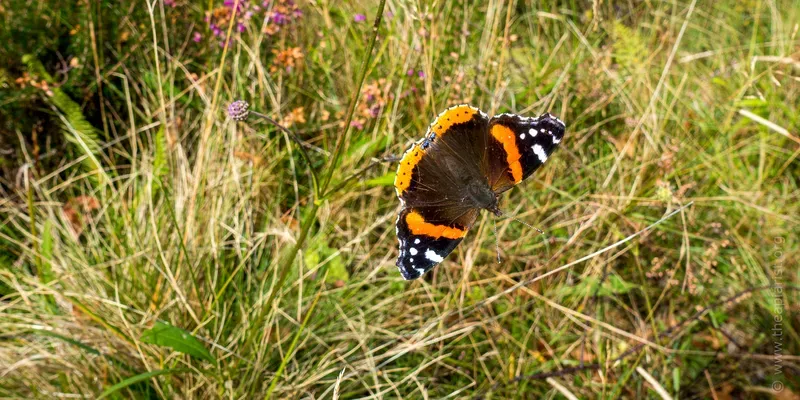
And, if the sun does shine, your bees will be flying.
I've seen a lot of bees on orientation flights and assume that many are recently emerged winter bees. I can't be certain about this as some of the hives were moved, so they might be older foragers re-orientating to their new location. Some will be water carriers, helping process the last of the fondant stores my hives are all overtopped with. However, with only limited pollen available, it's probably only ivy that's being brought back to the hive in any quantity.
Bring out your dead
But other bees will be carrying things out of the hive, rather than into the hive.
These are the undertaker bees.
They'll be struggling to carry the corpse to the hive entrance (it must be like getting a drunk friend safely out of the mosh pit), flying off a short distance and dropping it before returning for more.
A thankless task, but a critically important one nevertheless.
Why are undertaker bees particularly important in autumn?
In the post last week I described studies using marked, age-matched, cohorts of bees to determine the importance of pollen to the timing of winter brood rearing.
At this time of the year the summer bees start 'dying like flies' as the entire hive population turns over and is replaced with the long-lived winter bees.
The 'dying like flies' is the relevant bit here ...
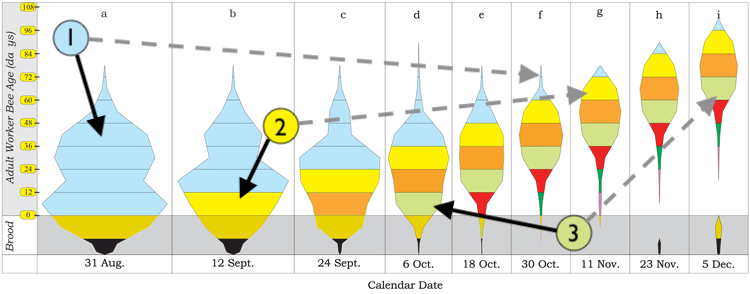
This image is from an excellent article titled Winter colony development by Lloyd Harris in Bee Culture. It illustrates both the number and longevity of groups (cohorts) of bees, marked every 12 days through late summer and autumn.
The number is indicated by the area of a particular colour, their longevity by the disappearance of that colour over time.
The cyan cohort - labelled "1" - are the summer bees. The hive is full of them in late August but, two months later (follow the dashed line) they've almost all disappeared (died). In contrast, only about 50% of the yellow cohort - these emerged in mid-September and are labelled "2" - have died two months later, and many survived until sampling stopped in early December {{1}}.
Finally, although there are smaller numbers of bees produced in early October - green, and labelled "3" - the majority survive at least until early December.
Now think about the weather conditions as all those bees are dying.
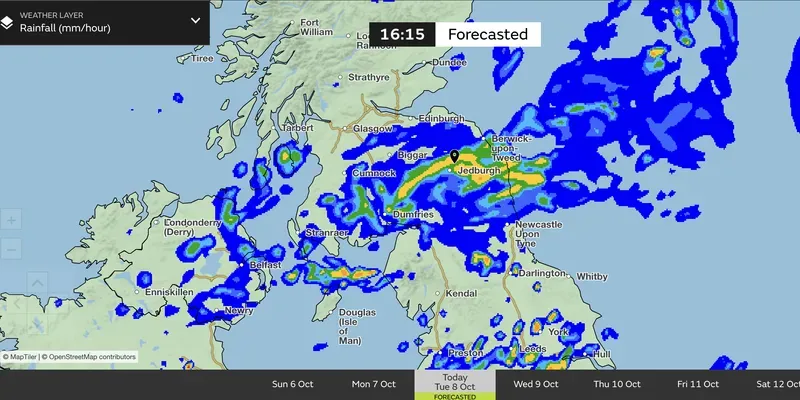
Yes, it'll be good enough for foraging in late August and early September (in which case the foragers are likely to go 'missing in action', never returning from a trip for nectar, pollen or water), but later in the season the weather will get worse and the nights will get longer, so more and more of them will die in the hive, not in the field.
That's a problem for the colony ... spending the winter ankle-deep in corpses is not healthy {{2}}.
For this reason, honey bees (and other social insects) have evolved processes to remove corpses from the nest.
Social insects and social immunity
Honey bees are eusocial insects. Eusociality is the highest level of organisation of sociality. It is characterised by the division of labour into reproductive and non-reproductive groups (e.g. queens and workers, in honey bees), and division into behavioural groups exhibiting temporal or permanent specialisation (e.g. nurses, guards or foragers) which - in turn - enable overlapping generations and larger colony sizes.
And larger colony sizes mean more corpses.
Eusociality is relatively rare in the animal kingdom {{3}}, but is most widely seen in hymenopterans such as bees, wasps and ants, and in termites.
Colony size and the division of labour provides many advantages in terms of efficient brood rearing, foraging and defence, but is not without problems.
Large, crowded, colonies are potentially more susceptible to contagious disease, a consequence exacerbated by the close genetic relatedness of members of the colony.
If one bee is genetically susceptible, it's probable that her half-sister will also be susceptible. This is one of the reasons queens mate with multiple drones ... it increases genetic diversity, and consequently the 'fitness', of the colony.
In addition to the evolution of immune mechanisms that operate at the level of the individual (these are analogous to antibodies and T-cells in humans, for example), this has resulted in the development of social immunity.
Social immunity is any antiparasite defence mounted for the benefit of individuals other than the actor.
In honey bees, social immunity includes the removal of dead or dying larvae and pupae from brood cells, and the removal of adult corpses from the nest.
These two activities are distinct, but related.
These are not the only social immunity mechanisms exhibited by honey bees; you can consider allogrooming (i.e. social grooming of nest mates), guarding the nest entrance, the imprisonment of small hive beetle by Cape honey bees {{4}}, or coating a dead mouse with propolis as other examples of this activity.
Hygienic behaviour and necrophoresis - part 1
The removal of dead and dying pupae from brood cells is termed hygienic behaviour. It has been extensively studied as it is a highly desirable trait which contributes to Varroa tolerance or resistance.
If a developing pupa is parasitised by Varroa and is sufficiently damaged that it dies, or at least stops developing properly, then a hygienic colony will remove the pupa and discard it from the nest. Some colonies exhibit high levels of hygienic behaviour, others do not.
At the individual level, hygienic behaviour is a two-step process; uncapping the cell and removal (from the cell and the nest) of the damaged pupa.
In contrast, necrophoresis is the physical removal of adult corpses that accumulate within the nest, for example those that drop through the cluster and lie on the floor of the hive.
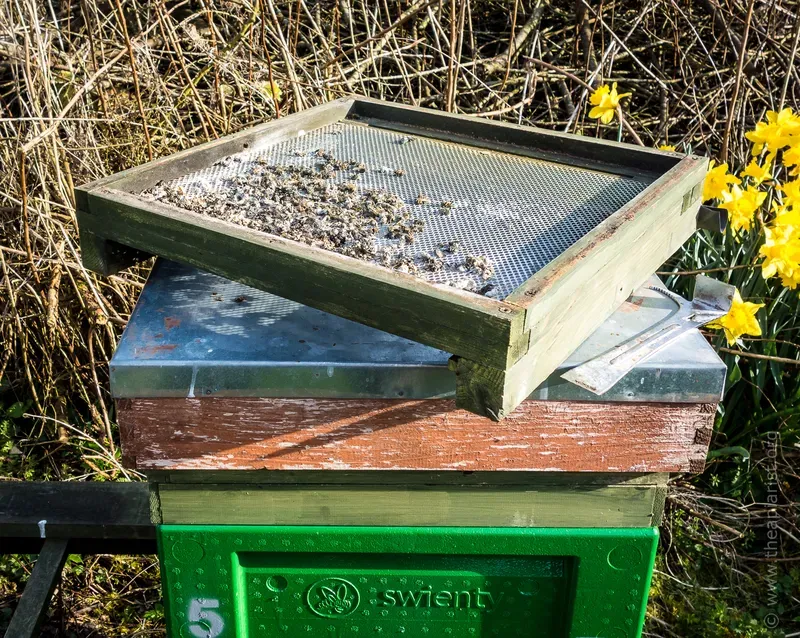
As such, necrophoresis appears to have some similarities with guarding behaviour - which includes the removal of (unwanted) live bees from the nest. However, although both are social immunity mechanisms, and there are some physiological similarities in the bees that complete these two tasks {{5}}, they involve distinct cohorts of middle-aged workers.
Only a small proportion of bees within the colony are undertakers or involved in hygienic behaviour at any one time. Studies suggest that perhaps 3-5% of workers in the population are involved, though the level of activity can vary over a wide range for individual bees. In this regard, this specialisation is a bit like that seen in foragers, where some are appreciably more active (the elite foragers) than the majority.
Dead body specialists or any debris?
Studies by Trumbo et al., (1997) indicate that ~25% of workers are engaged in undertaking at some point in their lives, and that undertakers are also more likely to clear out other debris from the hive.
However, it seems likely that this debris removal is probably due to being in the 'right place at the right time' (at or near the nest floor and entrance), rather than indicating undertakers are unable to discriminate between a corpse and other rubbish that accumulates on the hive floor.
Early studies conducted by Kirk Visscher (1983) showed that corpses were removed 70 times more rapidly than debris similar in size, shape and weight.
Visscher also investigated how undertakers recognised corpses. Solvent-treated or paraffin wax-coated corpses were only removed slowly, prompting Visscher to suggest that undertaking activity was probably induced in response to a chemical cue appearing shortly after the death of a bee.
Hygienic behaviour and necrophoresis - the same but different
In a rather circuitous manner I've introduced the broad concept of social immunity and two distinct, but related, activities (hygienic behaviour and undertaking) that are involved in the removal of dead pupae or bees from the nest.
They are distinct because the 'target' - a dead or dying pupa in a capped cell, or a cold corpse lying on the floor of the hive - are located in different regions of the nest, and because one is covered with a wax capping, and the other is not.
They are obviously related because they are mechanisms of social immunity that involve removal of the dead.
Are they related in other ways? For example,
- Are undertaker bees the same as those involved in hygienic behaviour, or vice versa?
- Do both undertakers and hygienic bees respond to the same chemical cues that identify the pupae or cadavers for removal?
We now know the answer to first of these questions, and can try making an informed guess about the second one.
What else do hygienic bees do?
A recent study by Perez and Johnson (2019) looked at the range of different activities that individual bees exhibited.
For example, do guard bees spend some of their time also allogrooming (both are activities that require close contact between bees), but never get involved in thermoregulating the nest by fanning, an activity that requires some level of coordinated activity by multiple bees?
Well, I don't know the answer to that question, but I do know - because Perez and Johnson specifically looked at it - that bees exhibiting hygienic behaviour were also much more likely to be involved in undertaking activity.
Individual bees performing hygienic behaviour were marked and observed. Most never repeated the activity (termed generalist hygienic bees). However, those that did uncap and remove pupae several times were termed specialist hygienic bees.
The second part of the study was to observe whether the other activities performed by specialist and generalist hygienic bees differed.
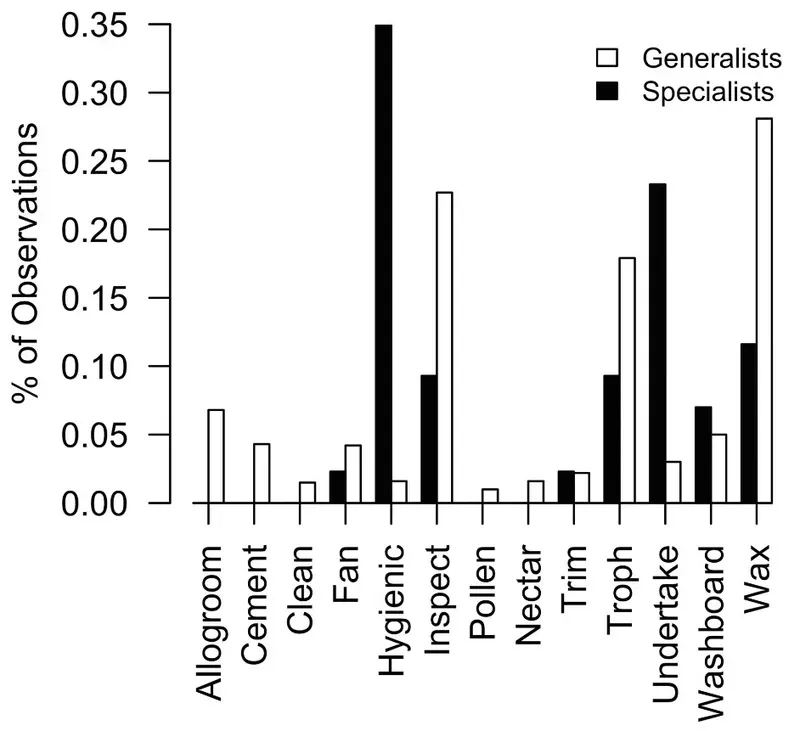
Perez and Johnson (2019) showed that specialist hygienic bees were much more likely to also perform undertaking duties than any other activity.
These are an important group of bees. Despite only 3% of the marked bees being specialist hygienic bees, they performed almost 50% of the total hygienic behaviour and 25% of the undertaking behaviour observed.
The scent of death
We don't yet have a complete answer to the second question (do undertakers and hygienic bees use the same chemical cues?) but we can make some informed guesses ... let's deal with the known knowns before embarking on the arm waving speculation.
There are studies of hygienic behaviour dating back almost 60 years. Many involve the generation of dead pupae within sealed comb by freeze-drying capped brood using liquid nitrogen (-196 °C). Typically, hygienic behaviour is 'scored' by determining the proportion of killed brood removed within 24 hours. In this manner, colonies exhibiting high and low levels of hygienic activity have been identified.
Previous studies have shown that freeze-dried brood produced two distinct chemicals, oleic acid and β-ocimene.
Are these involved in triggering hygienic behaviour?
β-ocimene, a volatile brood pheromone, suppresses ovary development in workers (it's absence results in the production of laying workers in the hive), stimulates foragers and is also produced by the queen. However, β-ocimene has not previously been implicated in social immunity.
In contrast, there is a large body of literature demonstrating the involvement of oleic acid, a non-volatile chemical, as a death cue in insects. For example, oleic acid stimulates necrophoresis (corpse removal) activity in ants and termites, and induces avoidance behaviour in crickets, cockroaches and caterpillars {{6}}. Corpse avoidance in non-social insects is likely to have evolved to prevent the risk of disease.
But is the production of β-ocimene and oleic acid by killed brood causative (of hygienic behaviour), or just correlative? Maybe the chemicals are produced but have nothing to do with the removal of dead pupae?
After all, the means by which the pupae were killed (freeze-drying) is hardly natural.
Odorant assays
To test this McAfee et al., (2018) developed the 'back-way odorant assay' using Jenter queen rearing cages.
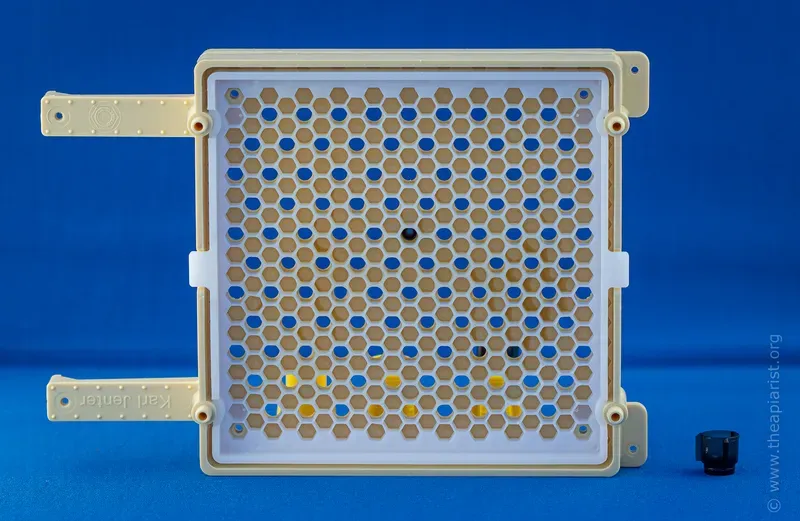
The queen was caged and allowed to lay up the frame, removed, and the bees reared the eggs, and resulting larvae, as workers. By removing the rear plug it was possible to detect the developmental stage of the pupa without uncapping the cell.
Clever.
This also allowed the direct addition of either or both of β-ocimene and oleic acid, without damaging the integrity of the capped cell.
Very clever.
And, to cut a long and convoluted story short, the combination of β-ocimene and oleic acid induced near complete removal of pupae from sealed brood.
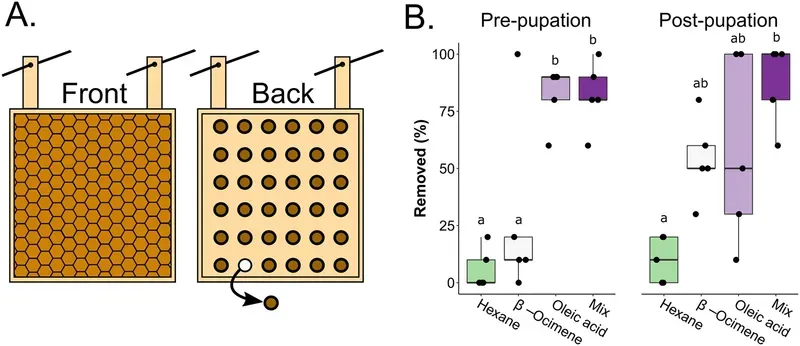
Furthermore, additional support that β-ocimene and oleic acid are the triggers that induce hygienic behaviour came from two further experiments which showed that hygienic bees exhibit nerve transmissions expected after exposure to these chemicals, that they express proteins which bind to the chemicals, and that bees showing high levels of hygienic behaviour bind better and respond better.
So, as in many other insects, both solitary and social, oleic acid is implicated in recognition of dead or damaged developing pupae in honey bees, and induces a specific hygienic response in worker bees.
Bring out your dead
Are β-ocimene and oleic acid also involved in necrophoresis?
Probably not.
I'm not aware of studies on the chemical basis of necrophoresis in Apis mellifera, notwithstanding those early studies by Karl Visscher which showed that these chemical cues appeared shortly after death.
However, I have previously discussed studies of the same process in Apis cerana by Ping Wen. These appeared in a pre-print (a scientific paper before peer review) in bioRχiv in 2020. This paper finally appeared in print in 2023 (Wen et al., 2023), but it's buried behind a paywall I cannot bypass (I've had to assume the paper is largely unchanged).
I'll paraphrase my previous post, highlighting the key results ...
- only cold dead bees are removed, warming them to 44°C prevented removal
- washing cold or warm corpses with hexane to remove the cuticular hydrocarbons (CHCs) prevented removal
Taken together, these two results suggest that warm bees (whether dead or alive) have a smell that is 'lost' once the corpse cools. The loss, or absence, of something is what triggers undertaking activity.
Using gas chromatography, Wen demonstrated that the hydrocarbons heptacosane (C27H56)and nonacosane (C29H60) were lost shortly after death as the corpse cooled.
Importantly, addition of these compounds delayed corpse removal.
This suggests that undertaker bees - at least those of the Eastern honey bee Apis cerana - identify corpses by the absence of heptocosane and nonacosane, two hydrocarbons that disappear as the corpse cools (and that are washed away with hexane).
Are the chemical cues the same, or different?
So, can we conclude that necrophoresis and hygienic behaviour are often performed by the same bees but are induced by different chemical cues?
Yes and no.
Yes, they are sometimes (often) performed by the same bees. However, these bees may be responding to different signals produced by dead pupae that are not produced by dead adult bees.
At least, the signals are different if Apis mellifera behaves in the same way as Apis cerana.
But do they?
The attentive reader will remember that Visscher also prevented corpse removal in Apis mellifera by coating them in paraffin-wax.
To me, this implies the masking of a 'scent of death'.
The cerana studies from Ping Wen demonstrate that the scent of death is the absence of certain hydrocarbons, which are normally produced by warm (and therefore live) bees.
How do we therefore explain the Visscher paraffin-wax result?
Tricky ... it seems to me there are three possibilities.
The first is that mellifera and cerana use a totally different mechanism to identify adult corpses. In cerana it is the absence of something, in mellifera it is the presence of something that is masked by paraffin-wax.
The second and the third possibilities are related. Perhaps paraffin-wax contains the hydrocarbons (heptocosane and nonacosane, or something similar) identified by Ping Wen, effectively 'labelling' dead bees as 'alive'. This control was not conducted, either by Visscher in the 1980s (unsurprisingly, as they hadn't been identified as being important), or by Wen in 2020. Alternatively, coating dead bees in paraffin-wax might induce the production of heptocosane and nonacosane by the corpse.
'It just happens'
Whatever the explanation, whatever the mechanism, the presence of this aspect of social immunity is what ensures that dead brood is removed and that the floor of the hive remains relatively clear of bees, despite the many thousands dying as the colony transitions from the summer to winter bee population.
Although there's almost no beekeeping to be done at this time of the year, the bees have a lot of housekeeping to do to prevent the build-up of corpses on the hive floor, and the potential spread of diseases within the colony. It's yet another example of role specialisation that makes honey bees such a fascinating insect to study and to work with.
Are there any implications for practical beekeeping?
Potentially.
The role for oleic acid in preventing the development of laying workers and in the recognition of dead pupae makes me wonder about the development of laying workers by bees exhibiting high levels of hygienic behaviour. These bees are more sensitive to oleic acid, are they therefore less likely to develop laying workers when terminally queenless? I bet nobody has ever looked.
With regard to necrophoresis, if Wen is correct and corpse cooling prevents hydrocarbon production (thereby triggering undertaking activity) then colder floors e.g. open mesh floors, might lead to better corpse management, and a cleaner hive.
Conversely, exceptionally well-insulated hives - as some beekeepers fanatically promote - could reduce corpse cooling, and so slow down undertaking activity.
Do I take any of this into account with my bees?
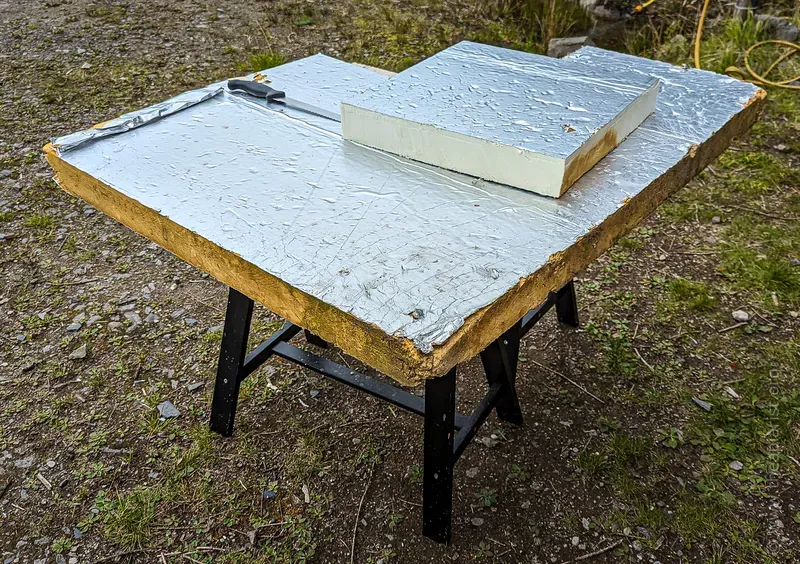
No.
My hives go into the winter with a thick block of insulation overhead, and an 'open' open mesh floor. I've always believed that this forces the cluster up to the warmest part of the hive, and enables the cluster to stay in good contact with its stores.
The floor, and the debris - both animate and inanimate - that accumulates when the bees are trapped inside, is a long way away.
Whatever the mechanism, this works for me 😄.
And them 😄.
Sponsor The Apiarist
The Apiarist covers 'the science, art and practice of sustainable beekeeping ... so much more than honey' and I write it to find out stuff about staghorn ferns (you'll need to read the online post and the embedded footnotes for this to make sense).
If you found this post informative, amusing or useful, or that it helped your beekeeping (or your knowledge of social immunity in ferns), then please consider sponsoring The Apiarist.
Sponsorship costs less than £1/week annually, or currently little more than a large cappucino monthly. Sponsors help ensure the weekly posts appear, receive an irregular (approximately monthly) newsletter, and have access to an increasing number of sponsor-only content ... those starred ⭐ in the lists of posts.
Alternatively, you can help reduce my caffeine overdraft ... and please spread the word to encourage others to subscribe.
Thank you.
References
McAfee, A., Chapman, A., Iovinella, I., Gallagher-Kurtzke, Y., Collins, T.F., Higo, H., et al. (2018) A death pheromone, oleic acid, triggers hygienic behavior in honey bees (Apis mellifera L.). Sci Rep 8: 5719 https://www.nature.com/articles/s41598-018-24054-2.
Perez, A.A., and Johnson, B.R. (2019) Task repertoires of hygienic workers reveal a link between specialized necrophoric behaviors in honey bees. Behav Ecol Sociobiol 73: 123 https://doi.org/10.1007/s00265-019-2731-7.
Sun, Q., Haynes, K.F., and Zhou, X. (2018) Managing the risks and rewards of death in eusocial insects. Philosophical Transactions of the Royal Society B: Biological Sciences 373: 20170258 https://royalsocietypublishing.org/doi/10.1098/rstb.2017.0258.
Trumbo, S.T., Huang, Z.-Y., and Robinson, G.E. (1997) Division of labor between undertaker specialists and other middle-aged workers in honey bee colonies. Behav Ecol Sociobiol 41: 151–163 https://doi.org/10.1007/s002650050374.
Visscher, P.K. (1983) The honey bee way of death: Necrophoric behaviour in Apis mellifera colonies. Animal Behaviour 31: 1070–1076 https://www.sciencedirect.com/science/article/pii/S0003347283800141.
Wen, P. (2020) Death recognition by undertaker bees. 2020.03.05.978262 https://www.biorxiv.org/content/10.1101/2020.03.05.978262v1.
Wen, P., Chen, J., and Huang, Z.Y. (2023) Death recognition by undertaker honey bees based on reduced cuticular hydrocarbon emissions. Entomologia Generalis 43: 379–387 https://doi.org/10.1127/entomologia/2023/1607.
{{1}}: Ignore the precise dates ... they are only relevant to the location where the work was conducted. Concentrate on the pattern.
{{2}}: Particularly when your ankles are as close to your body as they are in a honey bee.
{{3}}: And it's even rarer amongst plants, but may occur in colonial epiphytic staghorn ferns. One of the benefits of writing this stuff is discovering things like this ... I'd never considered that a plant could exhibit eusociality. The evidence is that colonial forms exhibit different morphologies for water collection, water channelling and support that are not seen in solitary specimens. Amazing. Typically I'll read something like this at midnight and disappear down a rabbit hole, risking missing my self-imposed Friday afternoon deadline. Or sleep.
{{4}}: Another rabbit hole.
{{5}}: See the reference by Stephen Trumbo and colleagues (Trumbo et al., 1997); both guards and undertakers are more developmentally advanced than other workers.
{{6}}: And bumble bees, but that wrecks the alliteration, so I omitted them 😉.
Join the discussion ...